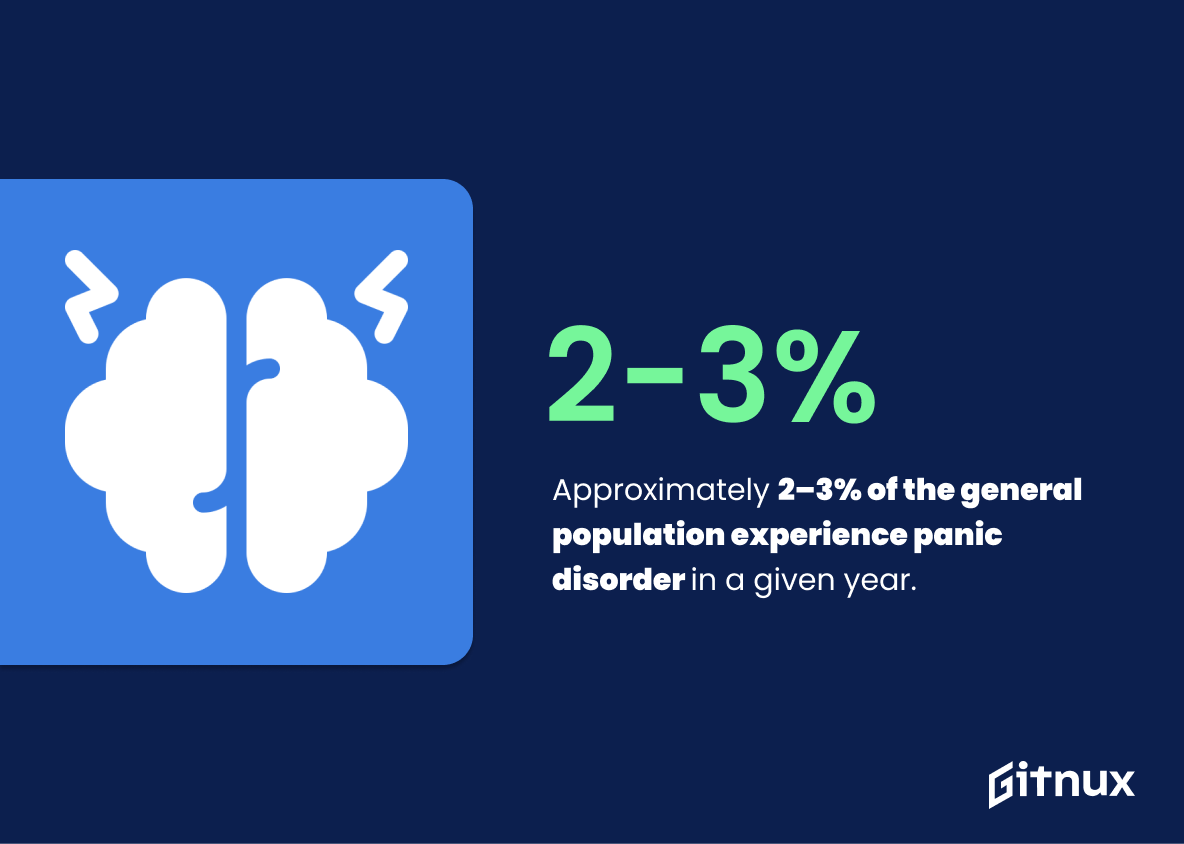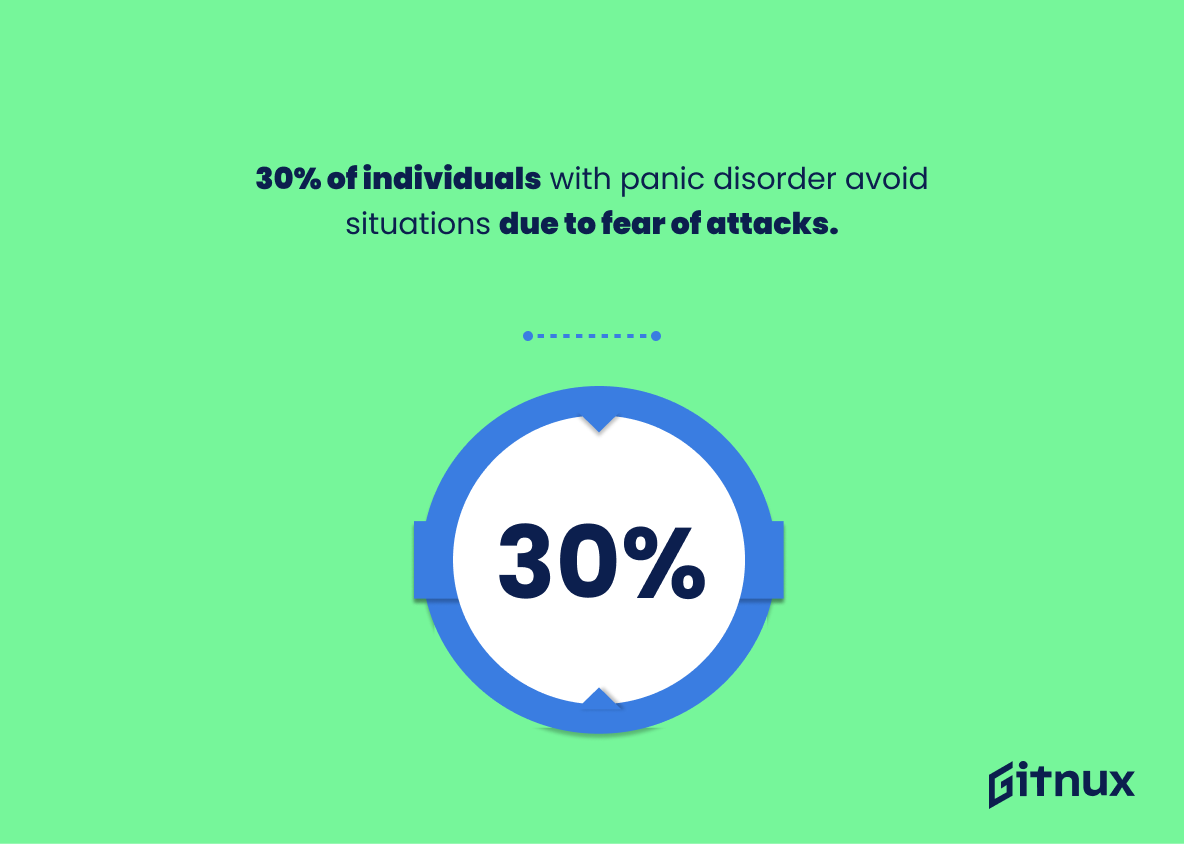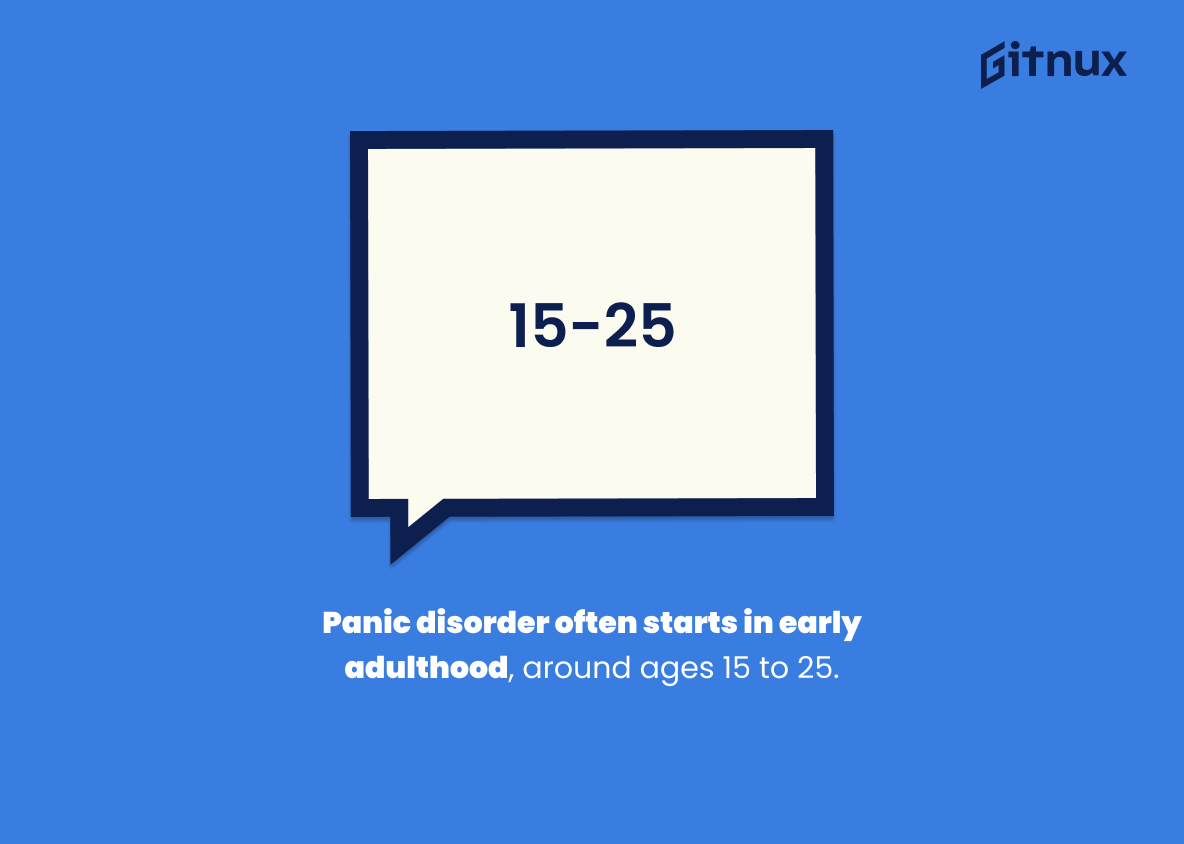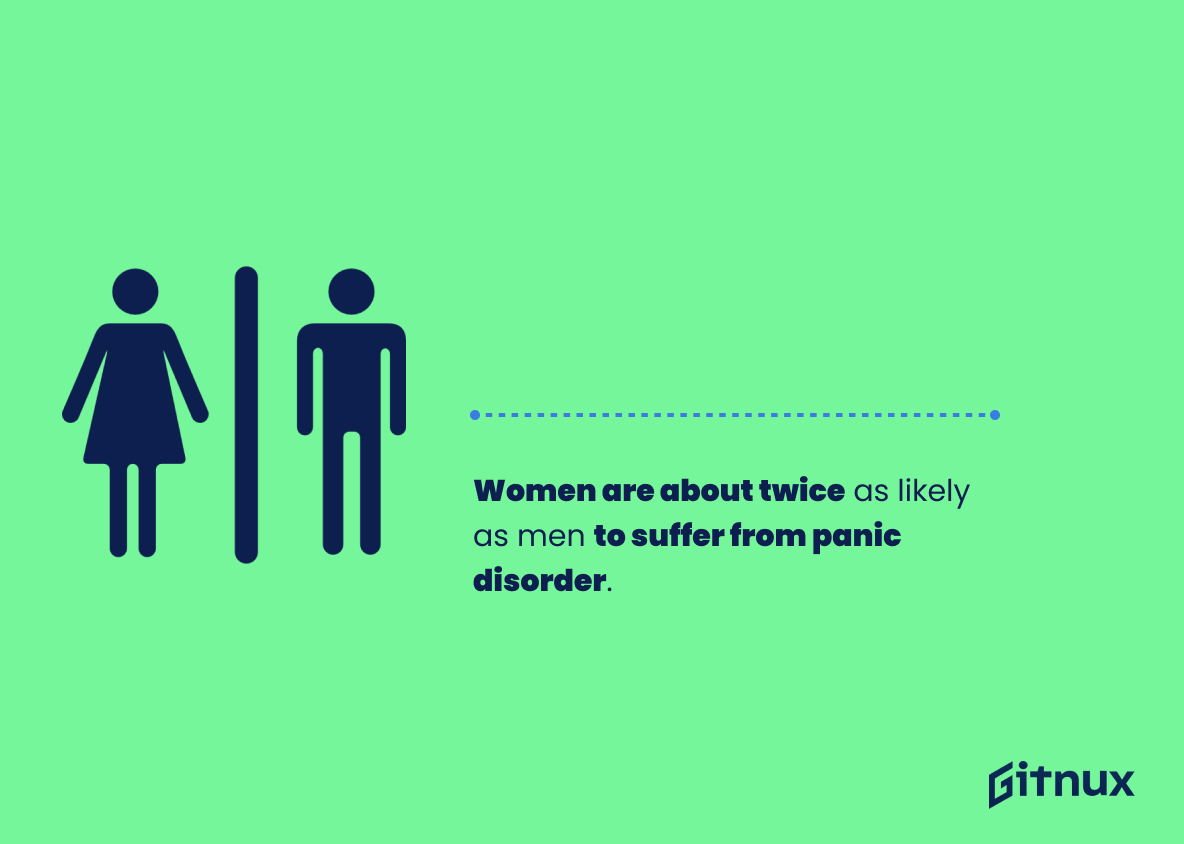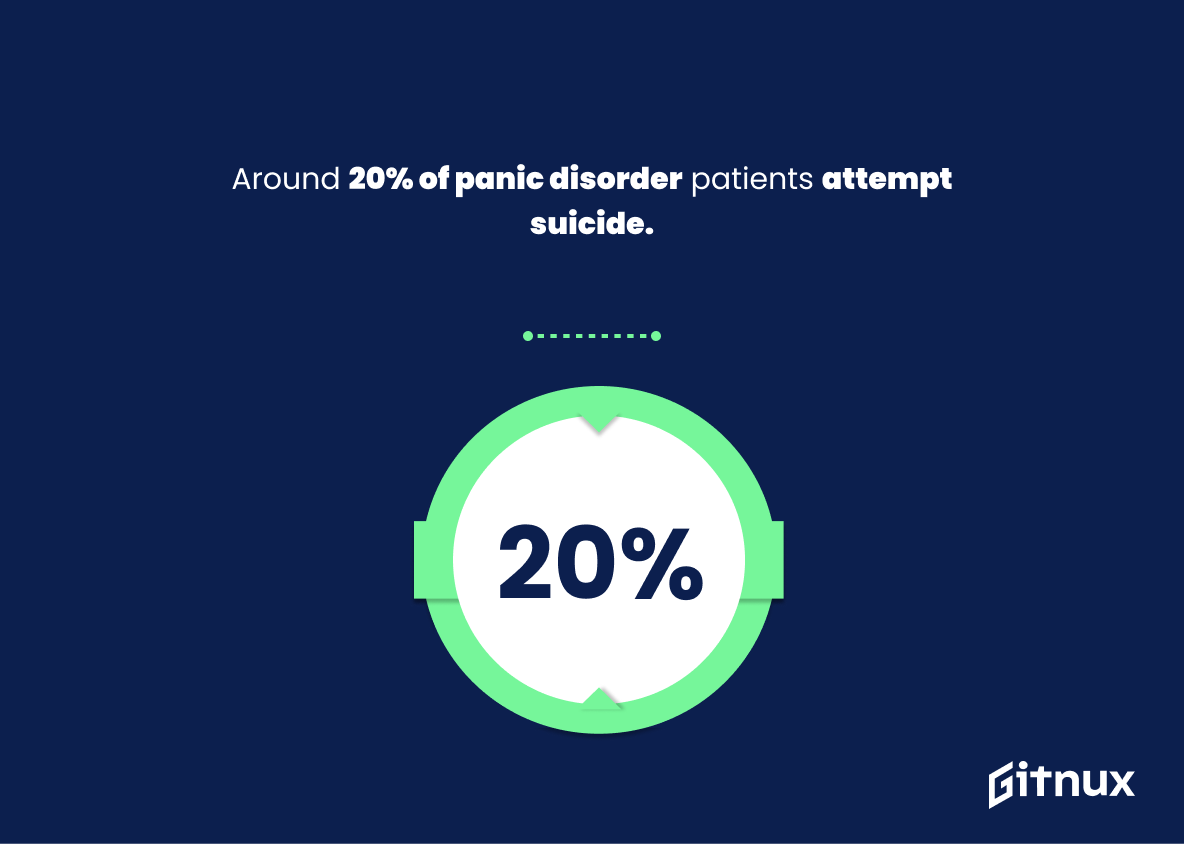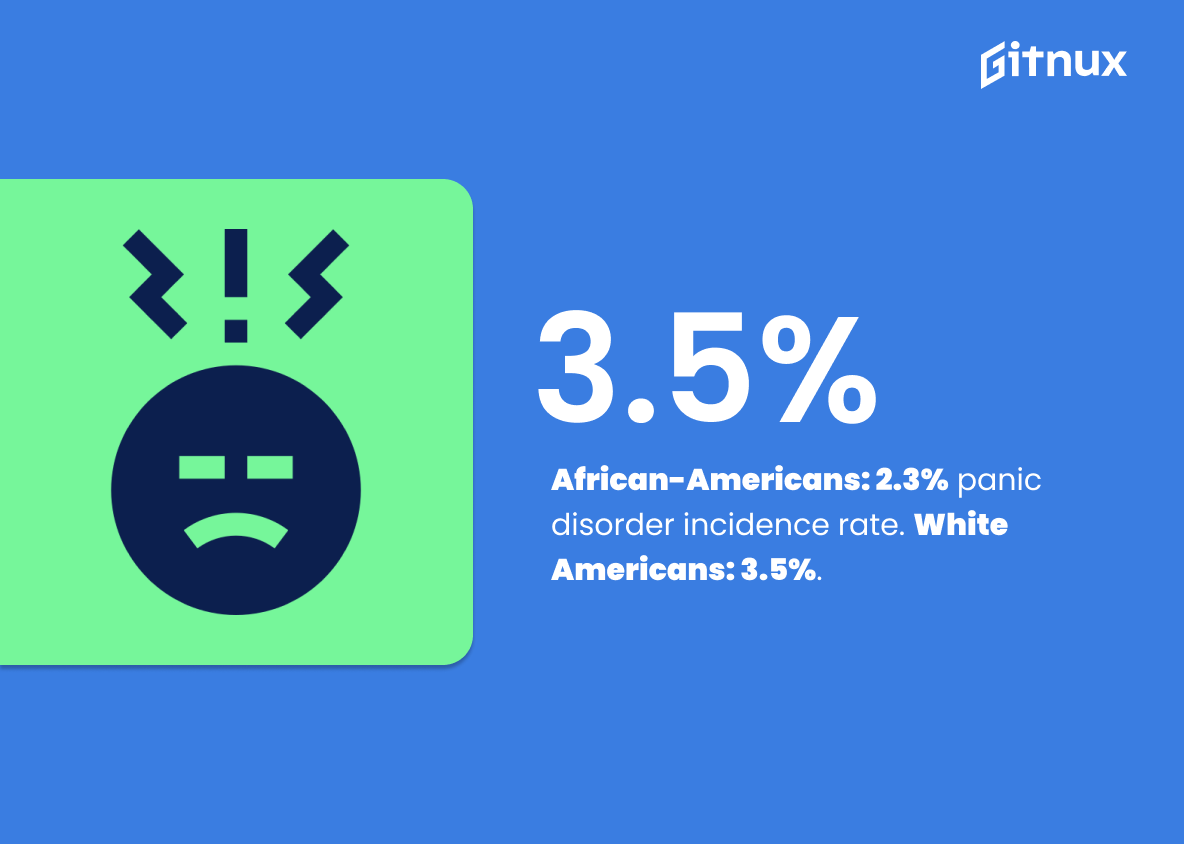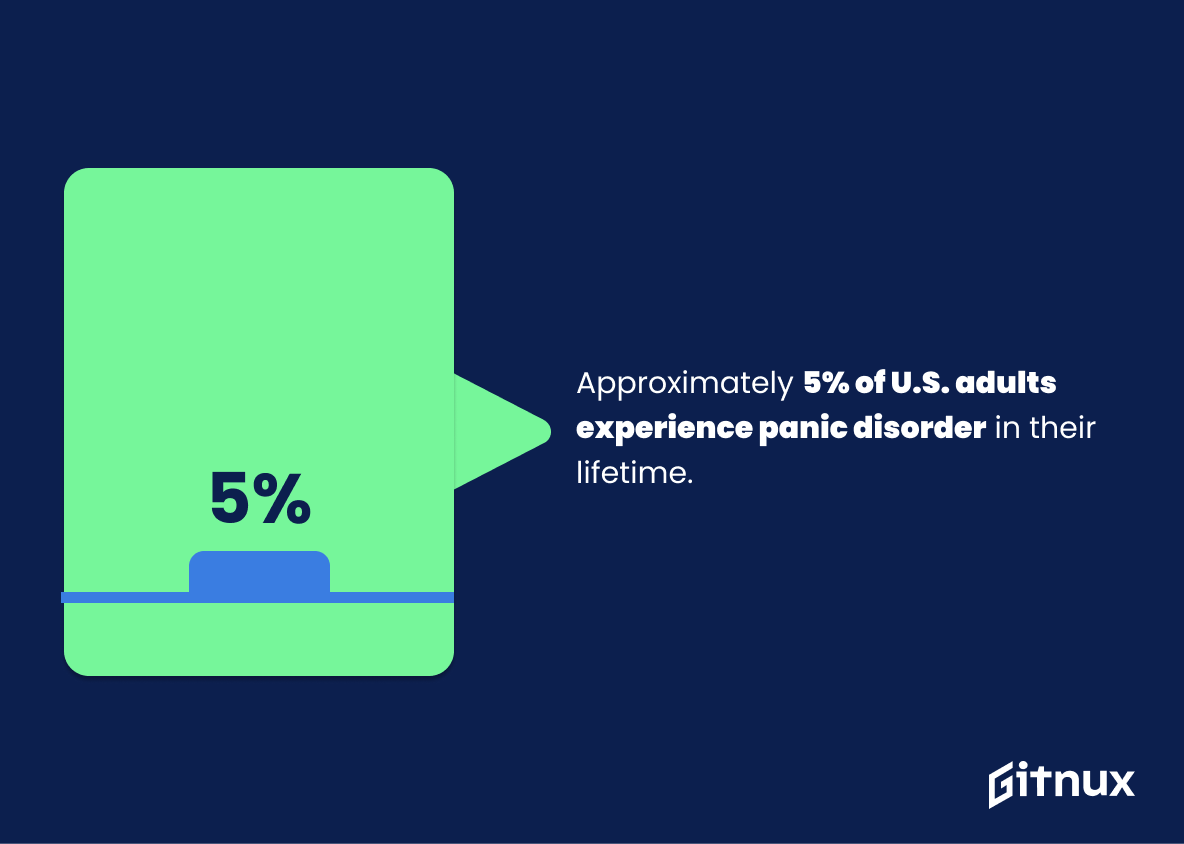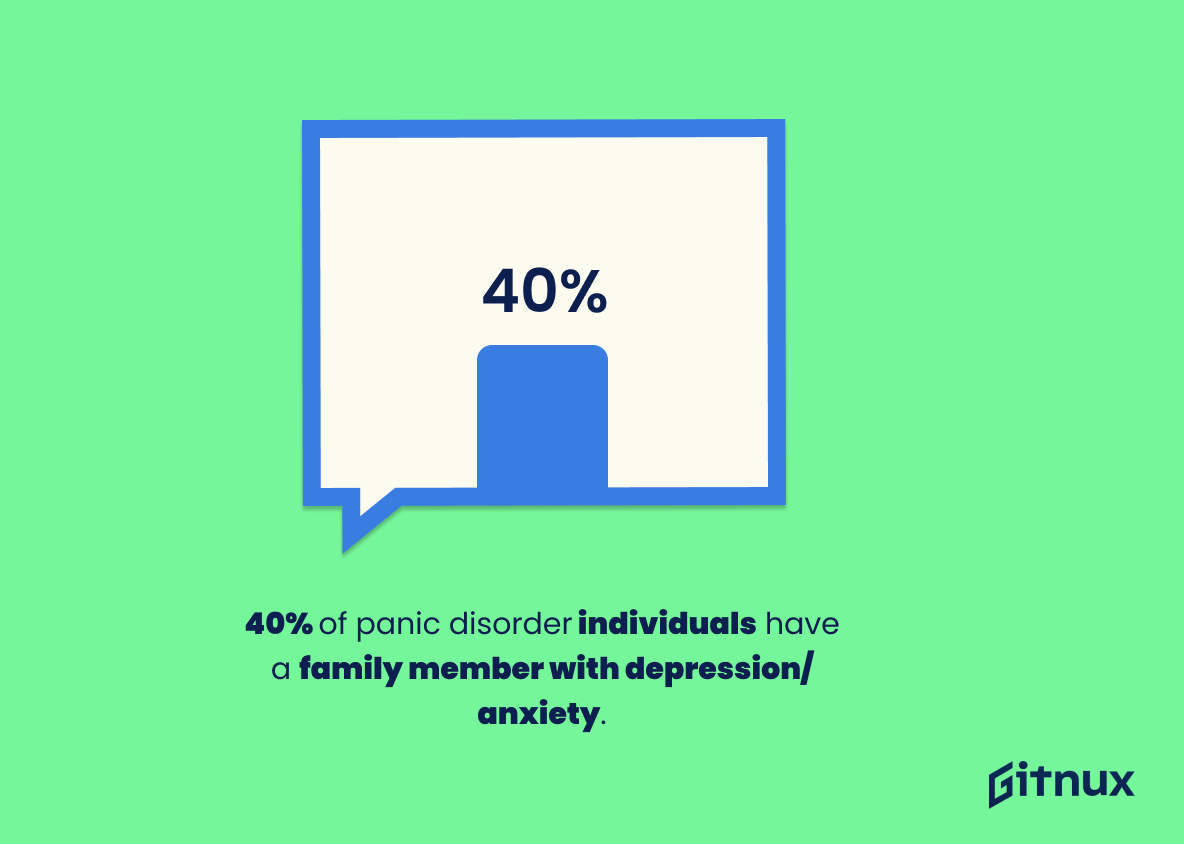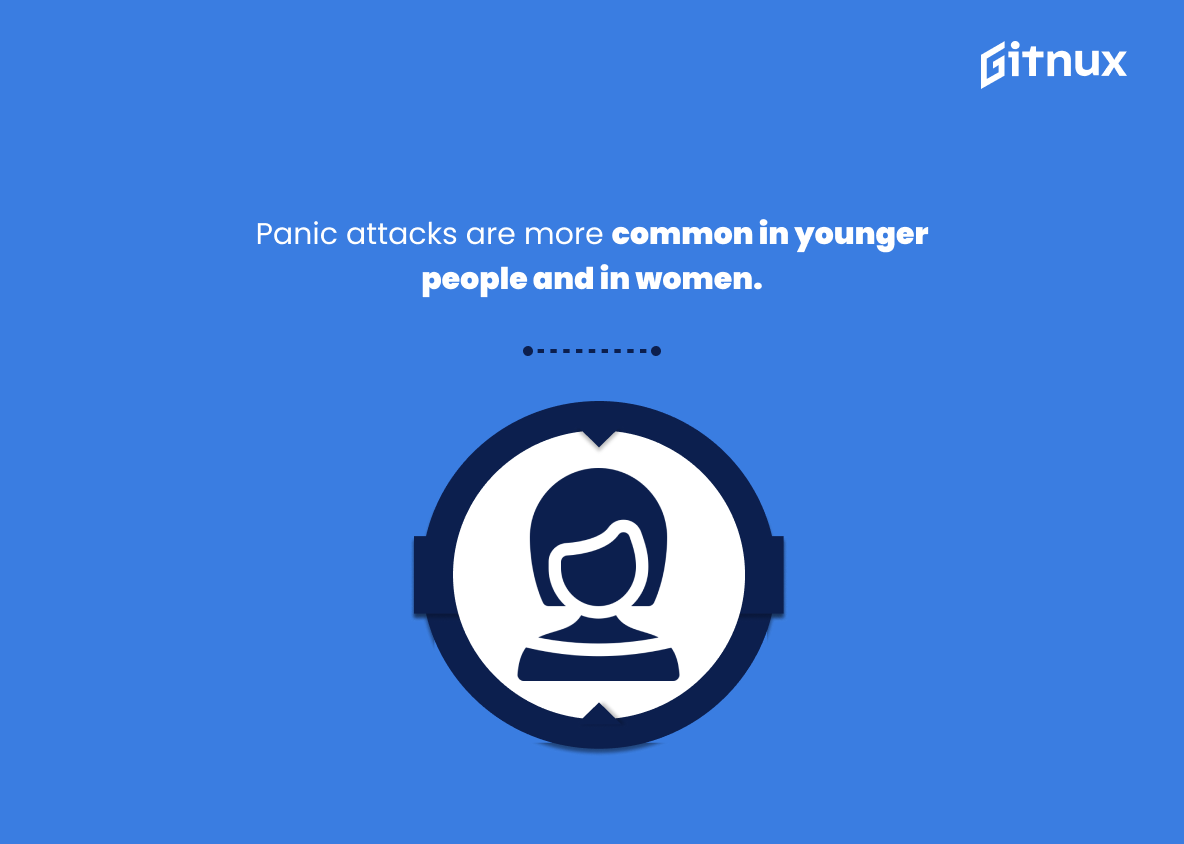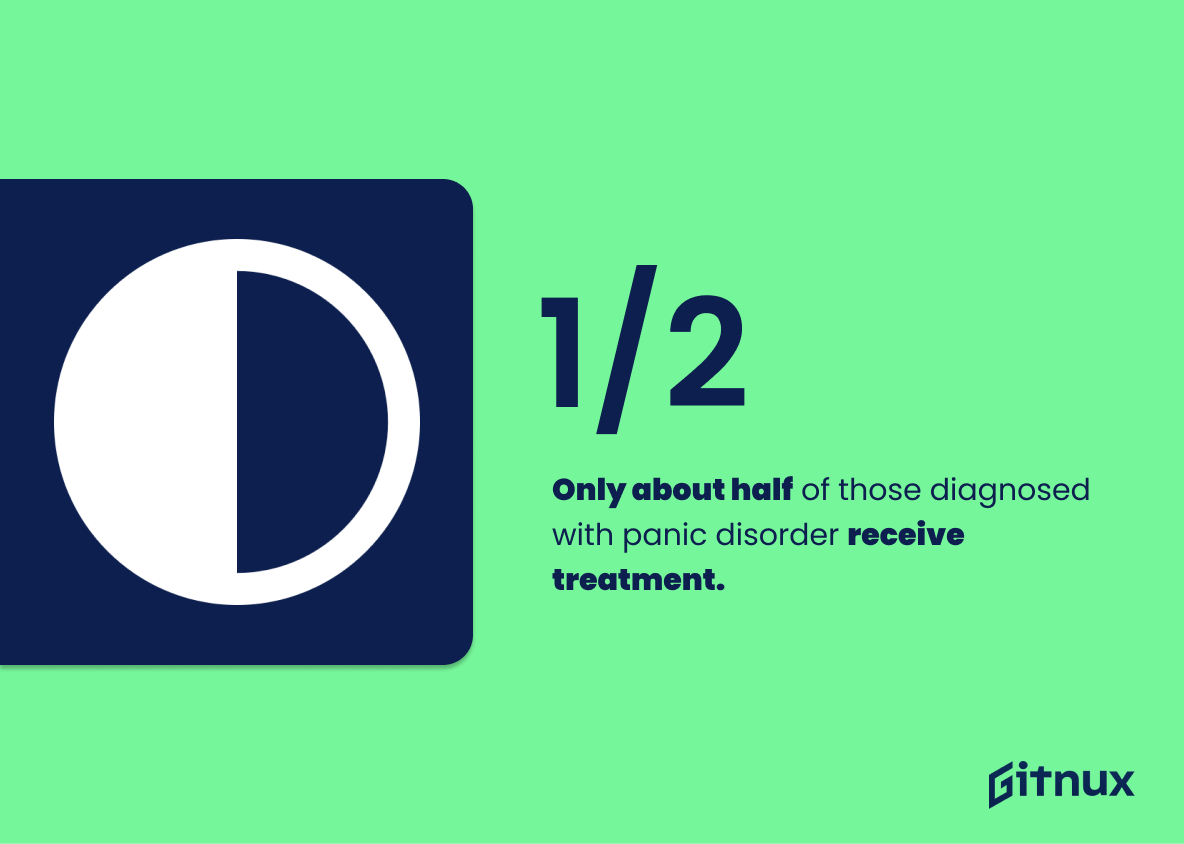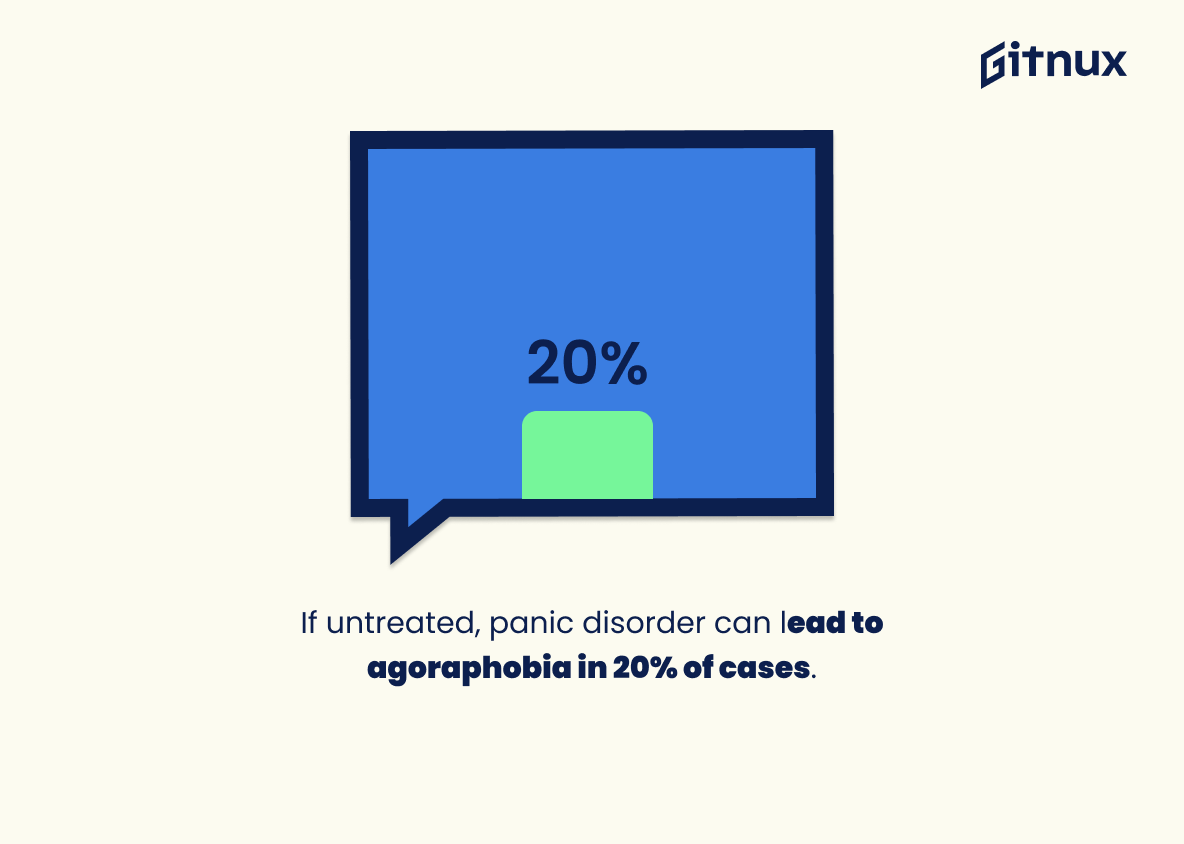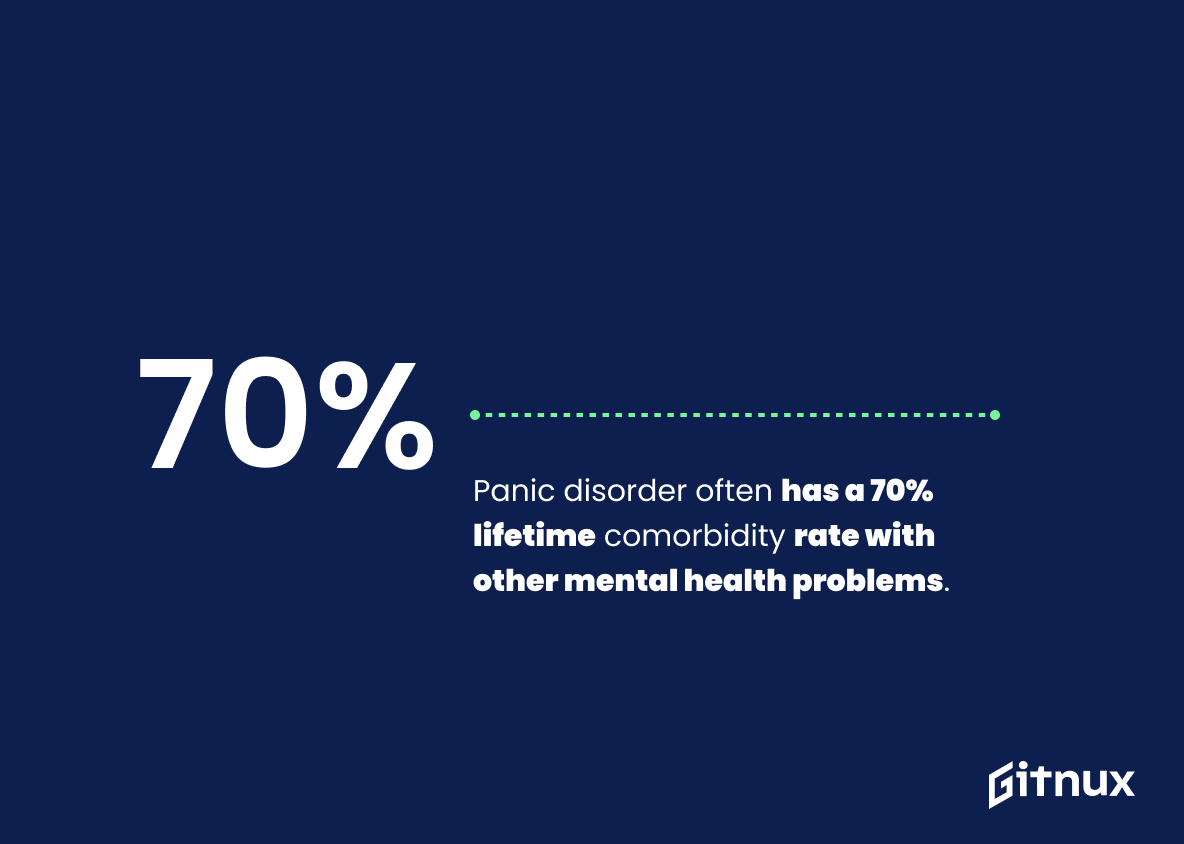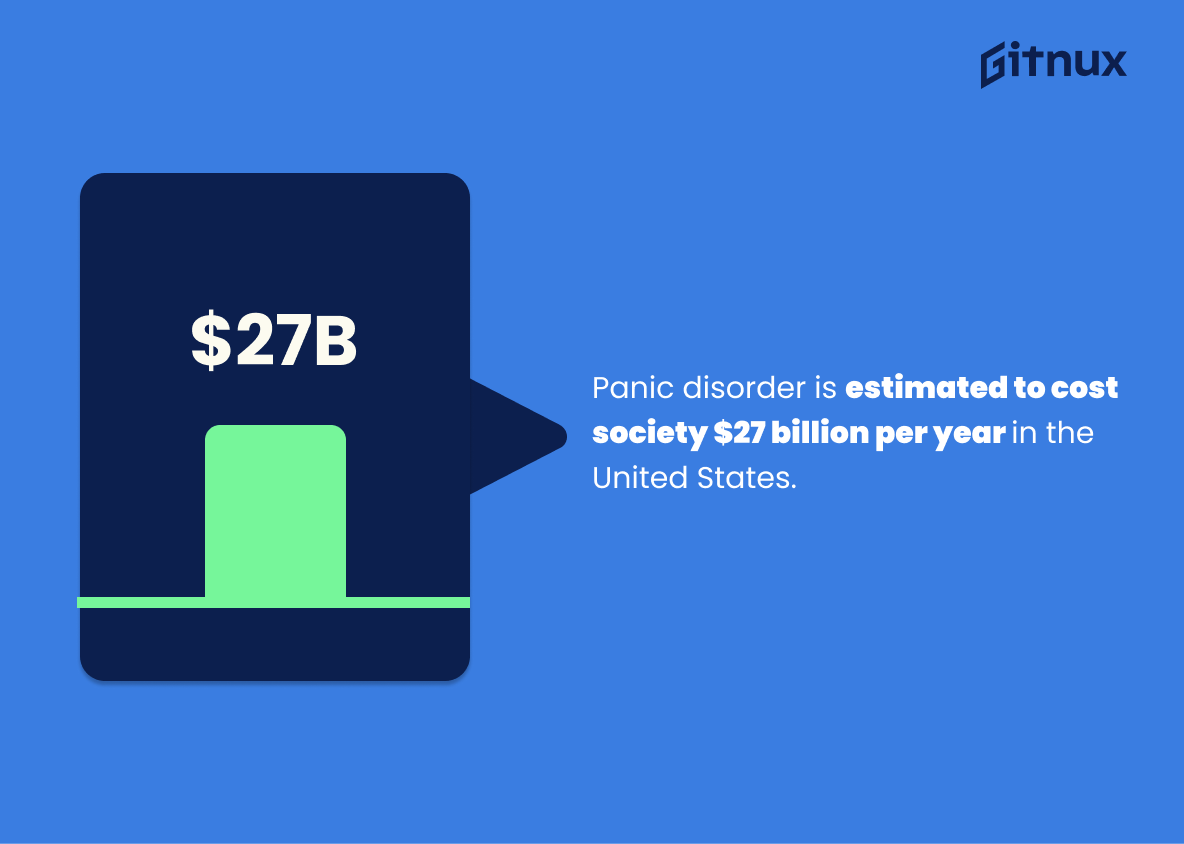Navigating the labyrinth of mental health can be daunting, especially when it is rooted in issues like panic disorders that remain largely under-discussed. Having a fear, foreboding, or a sudden onset of terror can be incredibly distressing. However, you are not alone. It’s time to shine a light on a shadowy corner of our collective well-being with our penetrating look at panic attack statistics. This blog post aims to not only enlighten you with the latest figures, but also to eradicate the stigma associated with discussing such matters openly. By using statistics as our guide, we will delve deeper into issues surrounding panic attacks, the prevalence of panic disorders, their impact on daily life, and more. Empower yourself with knowledge and expand your understanding of a condition affecting countless individuals worldwide.
The Latest Panic Attack Statistics Unveiled
Approximately 2–3% of the general population experience panic disorder in a given year.
Highlighting the statistic that nearly 2-3% of the general population experiences panic disorder annually sheds light on the pervasive nature of this mental health condition. It punctuates the narrative with a hard fact, indicating that panic disorders aren’t rare occurrences but a commonplace reality for a significant group of individuals. This figure seeds a sense of urgency and relevance in the blog post, underscoring the need for awareness, empathy, and appropriate treatment options. It’s a numerical testimony to the silent struggle of millions, providing readers with perspective and further validating the importance of discussing panic attack statistics.
Panic disorder typically develops in early adulthood, around the ages of 15 to 25.
Highlighting the age range when panic disorder typically develops provides a critical insight for the readers of our blog post, especially those within this age bracket or those who have loved ones in the same range. It acts as a beacon, casting light onto the often shadowy topic of panic attacks and mental health, allowing for early detection and understanding. It emphasizes the importance of vigilance during these formative years, offering an eye-opening revelation which can directly impact preventative measures, timely treatment strategies, and increased awareness in an otherwise vulnerable demographic. This statistic, therefore, serves as a valuable compass in navigating the complex terrain of panic disorders.
Women are about twice as likely as men to suffer from panic disorder.
In the universe of panic attack statistics, one star shines with significant brightness – the considerable gender disparity. A woman stands on a precipice, her likelihood of suffering from panic disorder at approximately twice the risk compared to her male counterpart. The bearing it has on our understanding is profound. It forces a magnifying glass onto the world of gender differences in mental health, hinting at disparate factors like social pressures, hormonal fluctuations, or perhaps a gulf in reporting habits between genders. It could also act as a potential beacon for tailored prevention strategies and treatment options – a tale of two genders underlying a single disorder. Unraveling the reason behind this statistic might open for us a Pandora’s box of gender-specific mental health knowledge.
Smokers are 2 to 3 times more likely to have panic disorder than non-smokers.
Lighting up the prominence of this statistic, it narrates an intriguing correlation between smoking and the occurrence of panic disorder, emerging as a key player in the contextual terrain of Panic Attack Statistics. The statistic propagates an important message – the grip of nicotine might not just tarnish your physical health but also inflict psychological damage, notably multiplying the risks of panic disorder by 2 to 3 times in contrast with non-smokers. By intertwining these two elements – smoking and panic disorders – the statistic equips readers with broader understanding and perspectives, potentially influencing decisions related to lifestyle and health. Furthermore, this statistic could act as a catalyst initiating a wave of awareness and prevention, primarily illuminating the connection between the two conditions that are otherwise considered independent. The inclusion of this statistic, hence, amplifies the blog post’s potency and relevance.
Around 20% of panic disorder patients attempt suicide.
Unveiling the alarming reality, this chilling statistic flags a silent crisis, it powerfully underscores the insidious link between panic disorders and the harrowing act of suicide among patients. More than merely numerical data, it loudly pronounces an urgent need for early diagnosis, comprehensive care, effective treatment strategies, and empathetic societal understanding in shattering the harrowing cycle of panic attacks and suicide tendencies. This figure unapologetically beseeches attention to an issue often shrouded in misunderstanding and stigma, making it an indispensable part of our conversation on Panic Attack Statistics.
African-Americans have a lower incidence rate of panic disorder (2.3%) compared to white Americans (3.5%).
This particular statistic illuminates the racial disparities present in the incidence of panic disorders, providing a compelling facet to the narrative of Panic Attack Statistics. When woven into a blog post, it can enforce the weight of cultural, genetic, and environmental variables in mental health, effectively debunking the misconception of ‘one-size-fits-all’. Moreover, a spotlight aimed at this statistic can trigger discourse on how mental healthcare resources are distributed and accessed across different racial groups, thereby fostering a personalized and inclusive approach to mental health.
40% of individuals with panic disorder have a family member with depression or anxiety.
In the labyrinth of panic attack statistics, one emphatic beacon of data illuminates the potent genetic connections underscoring mental health. The fact that nearly half of those suffering panic disorders have kin dealing with depression or anxiety signals a formidable familial link. Beyond the sheer numbers, it also colors the vivid image of panic disorders not as isolated phenomena, but part of a broader psychological tapestry. It suggests an inherited vulnerability, an empathetic testament to the struggle and resilience of familial ties against mental health battles. The psychological roots run deep, extending beyond the individual, into the family tree, paving a more empathic understanding of panic disorders in the broader span of mental health dialogues.
Panic disorder has a worldwide prevalence of about 0.5 to 1%.
Illuminating the vast scope of this phenomenon, the statistic reveals that panic disorder pervades every corner of the world, crossing boundaries to impact approximately 0.5 to 1% of the global population. Within the narrative of panic attack statistics, it offers perspective, serving as a potent reminder that this is not an isolated or minor occurrence, but a significant mental health issue with a global footprint. This percolates down to the individual on two levels: for those suffering, it’s a reminder that they are far from alone, and for those who are not, it serves as a crucial wakeup call about the widespread reality of this disorder.
Nearly 5% of adults in the U.S. are estimated to experience panic disorder at some point in their lives.
To paint an imagery of the prevalence of panic disorder, imagine you’re in a room full of 20 adults. In this setting, it’s likely one person is or has wrestled with this condition, as nearly 5% of adults in the U.S. are estimated to have experienced panic disorder in their lifetime. This startling picture underscores the significance of understanding, acknowledging, and addressing panic disorder through sufficient mental health resources. As it threads its way through society, touching one out of every 20 adults, it illuminates the urgency of tackling this health concern head-on. This projection informs us that panic disorder isn’t an obscure, rare condition, but a pervasive and pressing public health issue that touches every corner of the country. Any conversation, or blog post, about Panic Attack Statistics would be incomplete without this illuminating piece of data.
Panic attacks are more common in younger people and in women.
Shedding light on the vulnerability of certain demographics towards panic attacks, as evidenced by the data showing increased prevalence in younger people and women, adds a thread of targeted awareness to this blog post about Panic Attack Statistics. By dissecting these statistics, we accentuate the necessity of tailored strategies for these groups, encouraging the development of effective interventions. Furthermore, this finding underscores the importance of educating these specific segments of the population about panic attack warning signs, prevention, and coping mechanisms. Thus, this statistic contributes to a nuanced understanding of the condition and invites a discussion on strategies for targeted relief.
Only about half of those diagnosed with panic disorder receive treatment.
Highlighting this remarkable statistic paints a vivid picture of a silent battle, where approximately 50% of those diagnosed with panic disorder are navigating their symptoms untreated. This information becomes crucial as it punctuates the broader narrative on the urgency and necessity for improved access to, and acceptance of, mental health care. In light of the blog post’s focus on Panic Attack Statistics, this statistic drives home the reality that a significant fraction of our population grapple with this disorder in the shadows, unassisted by medical intervention or therapeutic services. Hence, this story of an ‘undiagnosed half’ serves as both a call to action and a sobering reminder of the work yet to be done in the field of mental health.
If untreated, panic disorder can lead to agoraphobia in 20% of cases.
Shedding light on the intersection of panic disorder and agoraphobia, this statistic exposes an under-recognized but significant consequence of untreated panic attacks. A striking one out of five untreated sufferers could be grappling with the debilitating constraints of agoraphobia. This surprising ratio underscores the importance of early intervention, demonstrating the necessity for proactive measures to prevent what could be a crippling double diagnosis. It amplifies the urgency for widespread understanding and awareness of panic disorders, not only in the psychological community but also in broader societal conversations.
Panic disorder is often accompanied by other mental health problems, with a 70% lifetime comorbidity rate.
Delving deeper into the realm of panic attack statistics, one cannot overlook the striking fact that a life-long correlation of 70% exists between panic disorder and other mental health conditions. This noteworthy conclusion is akin to unearthing a hidden context that paints a comprehensive picture of the struggles encountered by those diagnosed with panic disorder. Within the narrative of our blog post, this striking correlation illuminates the complex web of mental health challenges that are often intertwined with panic disorder, serving as a stark reminder that many dealing with this issue carry not one, but a cluster of mental health burdens. This realization calls for an inclusive mental health strategy that recognizes the prevalence of dual-diagnoses, encouraging a holistic approach to research, treatment, and public discourse on mental health.
Panic disorder is estimated to cost society $27 billion per year in the United States.
Shining a spotlight on the staggering economic footprint of panic disorder, estimated at a whopping $27 billion yearly toll on the U.S. economy, provides a striking perspective on the impact of this often under-discussed mental health condition. The gravity of this figure emphasizes not just the personal toll it takes on those affected, but also the financial burden placed upon society as a whole. Unveiling these monetary consequences in a blog post about Panic Attack Statistics amplifies the discourse on the true implications of panic disorders, beyond individual suffering, helping to place it rightly in the wider economic and societal context.
The fear of having another panic attack can lead to avoidance behaviors in 30% of people with panic disorder.
Unveiling the chilling figure where 30% of those experiencing panic disorder resort to avoidance behavior in dread of repeating panic attacks, paints a stark picture of the lingering terror imprinted by such attacks. This statistic doesn’t exist in isolation, but rather mirrors a pervasive challenge that prances beyond the immediate panic attack itself, extending into the contours of everyday life, deeply affecting one’s normal functioning. Unfolding this data offers valuable insight on the emotional aftershocks of panic attacks, emphasizing on its long-lasting psychological shimmers. This accentuates the urgency for targeted intervention strategies designed to not only tackle the momentary panic episodes but also the potential behavioral alterations arising from such fears. In the realm of a blog post swirling around Panic Attack Statistics, this statistic stands as a poignant commentary on the far-reaching impacts of a panic disorder, hence an indispensable facet of discourse.
Conclusion
Understanding panic attack statistics paints a valuable picture of a common, yet often misunderstood condition affecting millions worldwide. Education and awareness are our most powerful tools to combat the stigma associated with panic disorders. The more we discover and share, the closer we come to minimizing the detrimental impacts these episodes can have on an individual’s life. By familiarizing ourselves with this data, we can participate in dialogues that promote mental health inclusivity, encouraging those affected to seek help and assuring them that they are not alone in their struggle. After all, speaking openly about mental health matters, like panic attacks, is the seed of societal acceptance and the beginning of holistic healing for affected individuals.
References
0. – https://www.adaa.org
1. – https://www.journalofethics.ama-assn.org
2. – https://www.www.nimh.nih.gov
3. – https://www.pubmed.ncbi.nlm.nih.gov
4. – https://www.www.ncbi.nlm.nih.gov
5. – https://www.www.who.int
6. – https://www.ajp.psychiatryonline.org
